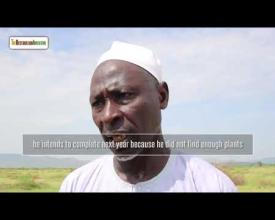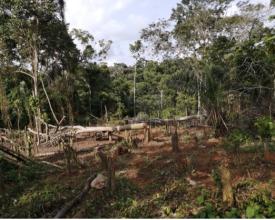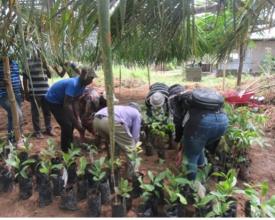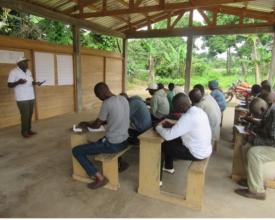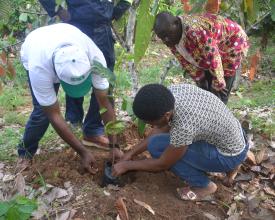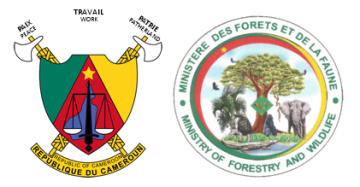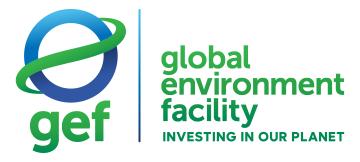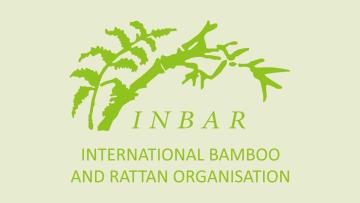
Strengthening the FLR Policy Landscape in Cameroon
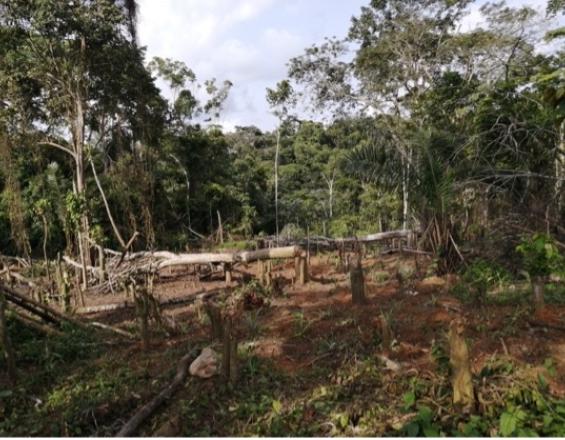
The Restoration Initiative (TRI) in Cameroon has successfully contributed to strengthen Cameroon’s policy commitments and improve the country’s legislative and regulatory frameworks to support forest and landscape restoration (FLR), including the Harmonized Action Plan for the Restoration of Degraded Land and Forest Landscapes in Cameroon (2020-2030) outlining activities that promote FLR and the legal decision titled “Modalities for the Circulation of Non-Timber Forest Products from Plantations,” that defined modalities for the management of non-timber forest products (NTFPs) and reinforced the processes for registering private NTFP plantations. TRI increased knowledge and awareness of government and community stakeholders regarding restoration opportunities and interventions through participatory ROAM processes reviewing existing policies that support restoration and facilitating the uptake and integration of policy recommendations.
TRI is a GEF-funded project
Context
Challenges addressed
The largest challenge TRI Cameroon faced in facilitating the creation of the policy milestones is a lack of real understanding of the principles of restoration, especially amongst government officials. Questions arose around what is being restored and how restoration is being measured. While some officials look at it as measuring the surface area of forest restored, others prefer viewing it as measuring the restoration of the functions of the ecosystem. Additionally, adequate political will can present a challenge, as some officials are not in favor of restoration and are therefore not part of the process of elaborating the policy tools.
Location
Process
Summary of the process
Developing policy tools that integrate policy recommendations and information found through the identification of high-priority restoration opportunities and intervention activities and the review and analysis of policies and plans affecting restoration, the three building blocks tie together to help strengthen Cameroon’s policy commitments and improve legislative and regulatory frameworks to support sustainable land and forest management. The Harmonized Action Plan integrated recommendations from the Framework document on FLR strategy, which was constructed under the policy and plan review umbrella of the project and took into consideration the information found through the ROAM assessments. Similarly, the legal decision and Agroforestry notebook translated recommendations into policy by providing an improvement to the regulatory system that allows farmers to more easily establish NTFP plantations. Together, the Harmonized Action Plan, legal decision, and agroforestry notebook mark major policy milestones that progress Cameroon’s policy landscape so that the country’s restoration and development goals are met.
Building Blocks
Identifying high-priority restoration opportunities and interventions through participatory ROAM processes
Through participatory Restoration Opportunities Assessment Methodology (ROAM) processes, TRI was able to outline restoration potential by identifying high-priority restoration opportunities, noting feasible restoration intervention types, and assessing finance and investment options. Activities identified included promoting the production of ecological charcoal, developing a plant production sector, and constructing water points in restoration sites. TRI conducted these ROAM assessments in three pilot sub-national landscapes, Waza, Mbalmayo, and Douala-Edea, where local and national stakeholders have been engaged. Pre-validation workshops occurred in each landscape with representatives of government ministries, local council representatives, local community representatives, and community chiefs, while a final report explaining the findings of the assessments was finalized in October, 2021 through a national validation workshop that included representatives from government ministries, international organizations, as well as local representatives and chiefs. Once finalized, a leaflet with the main findings was shared with stakeholders to quickly disseminate information and ensure those who do not have access to the internet can understand the ROAM assessments.
Enabling factors
An inclusive and participatory assessment process allowed for findings and recommendations to appropriately consider and represent all of the present and relevant stakeholders. Comprehensive stakeholder consultation meetings included traditional chiefs, heads of community development institutions, local council representatives, women and youth associations, and individual innovators. They covered the needs of restoration, best uses of local knowledge, existing experience gaps, and ongoing restoration activities.
Lesson learned
Overall, the participatory ROAM processes provided information on FLR opportunities and options. Through the assessments, TRI Cameroon learned what the priority restoration areas are, which restoration intervention types should be prioritized, what the costs and benefits of the different restoration types are, what the finance and investment options for restoration are, as well as what strategies exist for addressing major policy and institutional bottlenecks in the three pilot landscapes. These findings also presented lessons to be learned around how FLR actions could be modified in implementation on the field and provided real from-the-field data that could be considered in the elaboration of policy tools. Additionally, as one of the first activities undertaken by TRI Cameroon, the ROAM assessments were part of the learning by doing process and provided insight in how the participatory process could be better done in other landscapes.
Reviewing policies and plans supporting the restoration of degraded lands
Through the review and analysis of policies and plans that support or hinder forest restoration, TRI Cameroon was able to extract beneficial actions and suggestions to be included in policy tools and raise awareness around FLR policies, especially amongst government officials, where understanding around FLR is not universal. This includes supporting MINEPDED in the elaboration of the framework of the National Strategy for Landscape Restoration in Cameroon in 2021, which provided the main axis on which the country can rely on to implement FLR and was meant to pave the way for a national FLR strategy. TRI has also contributed to the development of policy and scientific notes, which provide specific information on a given aspect of restoration and are used to provide more detailed recommendations on specific topics to government officials as a way to prepare the base for more elaborated policy tools. In 2020, a political note on multi-partner and intersectoral collaboration in FLR as well as a scientific note on the paradigm shift to FLR, were elaborated and published. These notes are also able to be used within the context of the implementation of policy tools, as their specificity can provide greater detail on how to successfully implement FLR strategy recommendations.
Enabling factors
Working with the Ministry of Environment, Nature Protection and Sustainable Development (MINEPDED), TRI Cameroon was able to contribute to the elaboration and publication of policy documents such as the framework of the National Strategy for Landscape Restoration in Cameroon. With TRI’s assistance, MINEPDED took part in the writing of the strategy and Harmonized Action Plan as well as in their endorsements.
Lesson learned
Reviewing polices and plans affecting the restoration of degraded lands provided many lessons useful to the development of policy tools, including an understanding of which actions support or hurt restoration as well as how to better support the implementation of restoration activities. While the framework of the National Strategy Landscape Restoration in Cameroon provided suggestions on the activities that needed to be included in the policy tools, the Harmonized Action Plan acts as an extract and guideline document of the strategy. Meanwhile, the policy and scientific notes provide lessons on information sharing and awareness raising amongst government officials. By looking at specific issues and topics, the notes can be used to improve the understanding of FLR policy amongst officials and to lay the groundwork for future, more targeted policies that facilitate the implementation of greater FLR plans.
Resources
Uptake and integration of policy recommendations
Ultimately, greater policy commitments and FLR regulatory frameworks are achieved through the uptake and integration of the policy recommendations identified through the policy reviews and participatory restoration assessments. Guided by its reports like the framework document on FLR strategy analyzing FLR-related policies, TRI Cameroon successfully developed the Harmonized Action Plan, integrating recommended restoration activities such as supporting the creation of green infrastructure, promoting agroforestry, and implementing financing mechanisms for degraded landscape initiatives, and laying the groundwork for future, more specific FLR policies. The development of policies like the Harmonized Action Plan also took into consideration some of the information and data found in the assessments, which will be further utilized in the on-the-ground implementation. Additionally, the legal decision and use of the Agroforestry Notebook brings an outlined direction of action and marks the uptake of a policy that gives individuals the right to establish and own NTFP plantations, boosting their involvement in restoration activities. As more NTFP plantations get registered in the notebook, the integration of policy recommendations directly contributes to an improved FLR regulatory framework.
Enabling factors
TRI Cameroon had the necessary resources to contribute to the development of the Harmonized Action Plan and legal decision, which established provisions and actions that integrated the recommendations developed throughout the project. TRI also benefited from the political will of MINEPDED and MINFOF to elaborate and validate the policies.
Lesson learned
Working to integrate the policy recommendations developed through assessments, review, and analysis, TRI Cameroon learned both the opportunities as well as restrictions around the development and implementation of policy tools. While the Harmonized Action Plan extracts vital recommendations from the Framework document on FLR strategy, the guideline document was brought about due to a lack of resources. Originally intended to pave the way for a national FLR strategy in Cameroon, TRI was unable to finance the development of a more comprehensive national strategy. Inversely, the success of the legal decision and Agroforestry notebook show how the uptake of recommendations contributes to a strengthened regulatory system promoting people’s involvement in restoration activities. By working to remove administrative barriers, hundreds of NTFP farmers can be registered and contribute to the country’s FLR goals.
Resources
Impacts
As a result of improving Cameroon’s policy landscape in support of sustainable land and forest management, multiple major policy tools were developed. This includes the Harmonized Action Plan for the Restoration of Degraded Land and Forest Landscapes in Cameroon (2020-2030), which defines the different actions and activities Cameroon’s government can take to effectively implement FLR. Designed to help vegetate degraded areas and reverse degradation in high-risk areas, the plan marks a major step towards the country’s ultimate restoration goals and development pledges, such as restoring 12.06 million hectares through the Bonn Challenge and AFR100 restoration initiatives. The other major policy outcome, the legal decision that defined the modalities of management, exploitation, and trade of NTFPs harvested from plantations and reinforced the Agroforestry Notebook, which is used to register established plantations and private ownership, created a major difference in restoration practice as it has prompted farmers to begin planting NTFPs by removing limiting administrative requirements. While farmers had previously avoided planting NTFPs, the decision resulted in farmers establishing NTFP plantations and producing goods such as cocoa and coffee, with 11 plantations already registered in the notebook and plans to register an additional 100 to 200 farmers.
Beneficiaries
The main beneficiaries include NTFP farmers and local communities. With the policy tools, farmers face less administrative obstacles in establishing NTFP plantations and local communities are prioritized in trainings and outreach in restoration activities.
Sustainable Development Goals
Story
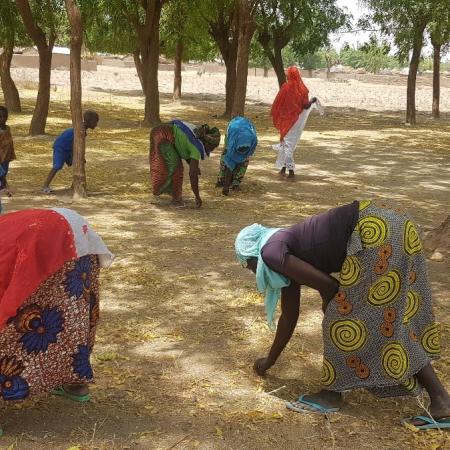
Introduced in the community by traditional practitioners in the 1970s after the country’s independence, the neem tree species was planted in local communities, including Waza, with limited access in the early years only by the village chief who had exclusive tree rights.
Over the years, neem has gradually become indispensable to communities, the environment and the improvement of household incomes. Due to its strong adaptive capacity and its importance, the TRI Project prioritized it in the context of the restoration of degraded forest landscapes.
Mohamat Bouba, a farmer from Aïssa Hardé community said, “Our landscape was already turning into a desert, but the project has helped reduce the risk of desertification that was threatening our village”. Communities have been trained to produce neem oil with multiple therapeutic virtues including for skin care, as antibacterial, antifungal, anti-inflammatory and antiseptic lotion, for treating stomach aches and hair treatment.
Economically, the neem plantations under the project represent an essential output for the empowerment of women in Waza. The capacity of twenty two women was built in neem oil extraction.
Jacqueline Dehimbe, a community member, said “I have been extracting neem oil for a few years. In the context of the project, my husband received neem plants for his field. I market neem oil to buy soap at home, food and send my children to school. The sale of neem oil helps us a lot in our locality despite the difficulties we encounter with the animals and the lack of water to water the plants.”

